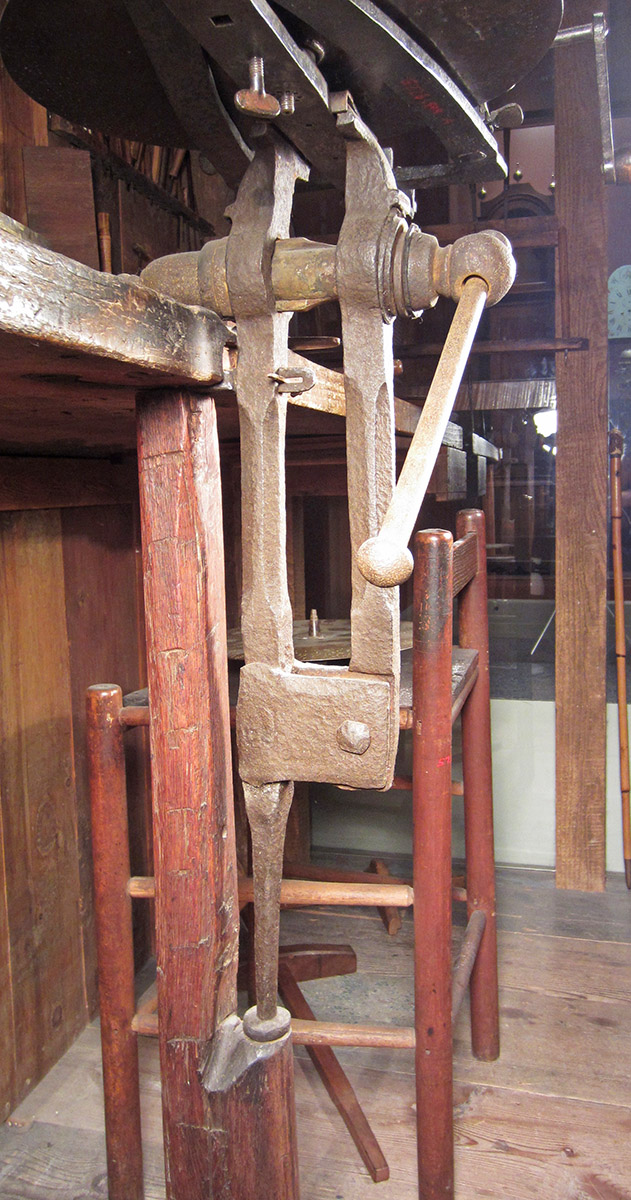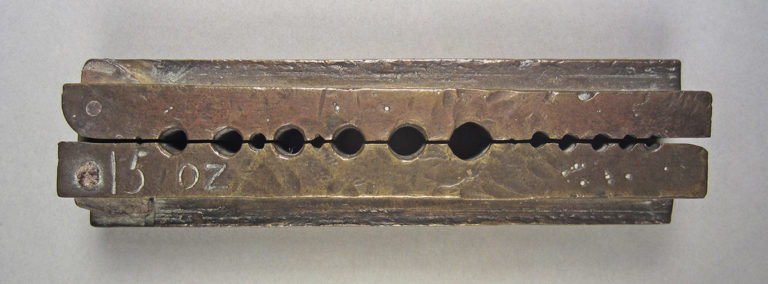Vises
Large objects to be cut, filed, bent, or simply held in place for a period of time required the use of a fixed, heavy bench vise (right). The triangular support of the Dominys' wheel-cutting engine was gripped in the jaws of this bench vise. The bench vise was one of the watchmaker's principal tools, functioning as a clamp or grip for other tools, such as a small lathe, in holding parts for cutting, polishing, and filing. The arbor of a barrel drill could be placed in one of the holes drilled in the side of the vise jaws, a standard practice for metalworkers.
Bench vise, probably England, Nathaniel Dominy IV (purchaser/user), 1760-1800. Iron; Steel. 25.5" (L); 11.5" (W). Museum purchase with funds provided by Henry Belin du Pont, 1957.0026.521


Hand vises (above) were held in the hand and assisted in the filing of small arbors, pivots, pins, and other clock parts. In his Panorama of Science and Art (1816) Smith describes how this tool was used in conjunction with the large bench vise: "The hand vise is used to hold small articles in the act of filing; it is held in the left hand, and the parts of the iron, while pressed upon the end of the bench, or upon a bit of wood or bone in the large vice, is successively turned to the file, which is held in the right hand. A nick is made in the wood or bone, to keep the work from being carried aside by the file."161
Hand vise (left), probably England, Nathaniel Dominy IV (purchaser/user), 1760-1800. Iron. 4 3/8" (L). Museum purchase with funds provided by Henry Belin du Pont, 1957.0026.397.
Hand vise (right), probably England, A.S. Munger (maker), Felix Dominy (purchaser/user), 1817-1835. Iron. 4 3/8" (L). Museum purchase with funds provided by Henry Belin du Pont, 1957.0026.428.
The wire vise, weighing just under one pound, was used as a clamp for brass wire to be filed or hammered into a rivet head. Pressure marks on both the wide and the narrow sections of each arm indicate that it was probably held in the Dominys' large bench vise when in use. Hammer marks on the upper and lower surfaces indicate its use as a riveting stake.
Wire vise, Nathaniel Dominy IV (maker),1760-1812. Brass; Iron. 4.6" (L). Mark: "15 oz" scratched on top of jaw. Museum purchase from Nathaniel M. Dominy 1957.0084.053

